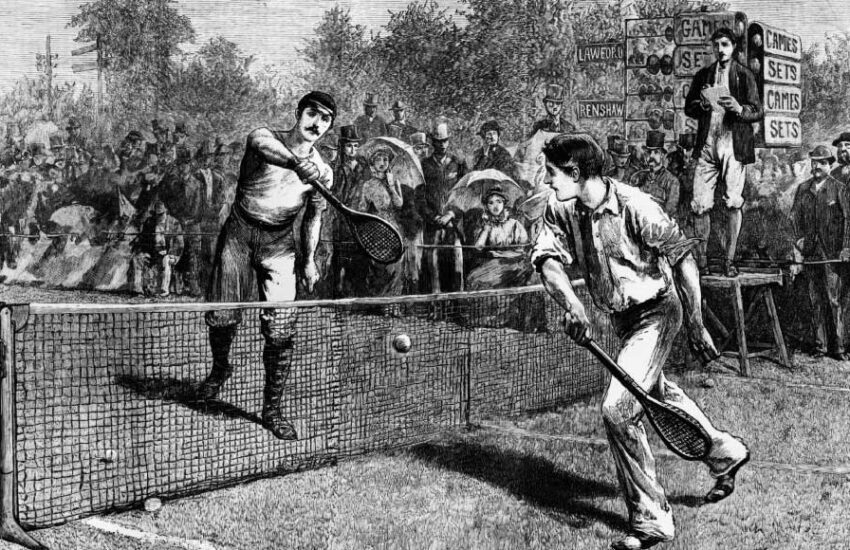What Color is a Tennis Ball? Unveil the Tennis Ball Rainbow
Tennis, a sport revered for its grace, power, and precision, is not just about racket skills and court strategies. It’s a realm where every stroke holds a story, and even the humble tennis ball, adorned in vibrant hues, narrates a tale of evolution and progression within the sport.
The colors of tennis balls transcend mere aesthetics, holding a deeper significance that reflects the sport’s journey through time.
In this comprehensive exploration, we delve into the world of tennis ball colors, unraveling their significance, historical shifts, and the narrative they weave about skill progression and court adaptation.
The ITF and Tennis Ball Colors
In the world of tennis, colors play a crucial role beyond aesthetics. The ITF strictly dictates acceptable hues for official play. While leisure games might showcase a spectrum of colors, organized events mandate the fluorescent yellow shade. Surprisingly, this particular hue, known as “optic yellow,” wasn’t embraced until 1972 when studies unveiled its heightened visibility on television.
The Role of Felt in Tennis Balls
Ever pondered why tennis balls are enveloped in felt? This fibrous covering, encapsulating the ball’s rubber composite surface, isn’t just for aesthetics. It significantly alters the ball’s flight dynamics by reducing aerodynamic drag. This felt ensures improved flight characteristics, enhancing the overall gameplay experience.
Deciphering Tennis Ball Numbers
Beyond brand identification, the numbers adorning tennis balls serve a purpose—they differentiate between sets of the same brand. This seemingly innocuous addition aids in distinguishing one set from another, simplifying the game’s logistics.
Explore the dynamics of tennis ball rotation
Understanding Bounce in Tennis Balls
The bounce of a tennis ball is crucial to gameplay. Upon unsealing a tennis ball can, its bounce begins to diminish gradually. Modern regulation balls, devoid of internal pressurization, are initially stored under pressure, ensuring optimal performance. However, altitude variations necessitate adjustments in initial pressure to maintain consistent bounce levels.
Testing a Tennis Ball’s Bounce
Regulators meticulously evaluate a tennis ball’s bounce by dropping it from a standardized height and environment. The bounce height of 53″ to 58″ is deemed appropriate under specific conditions. Interestingly, balls designed for high altitudes showcase distinctive properties when tested at sea level.
The Play and Stay Tennis Program
The ITF’s “Play and Stay” initiative revolutionizes tennis initiation for newcomers worldwide. This program introduces a diverse range of slower balls and smaller courts tailored to enhance players’ learning experiences, catering to both adults and children.
The Evolution of Tennis Ball Colors
The captivating evolution of tennis ball colors traverses through history. Initially, balls were either black or white, with Wimbledon adhering to the traditional white until 1986 when it transitioned to the iconic yellow. This color progression symbolizes the sport’s adaptation to enhance visibility and engagement.
Different Colored Tennis Balls and Their Significance
Beyond the iconic yellow, tennis embraces red, orange, and green balls, each catering to various skill levels. These distinct hues signify progressive levels of gameplay, accommodating players’ motor skills and court dimensions. From slower, lower-bouncing balls to ones mirroring standard yellow, each color marks a player’s advancement in the sport’s journey.
Red: A Gateway to Tennis
The red-colored tennis balls, designed for beginners, initiate players into the sport. With lower bounce and slower movement through the air, these balls accommodate early skill development. Courts tailored for this level offer smaller dimensions, ensuring a comfortable introduction to the game’s basics.
Orange: Stepping Up the Game
Transitioning from red to orange denotes a player’s growing confidence and proficiency. These balls provide increased speed and higher bounce, preparing players for the next level. Court sizes expand slightly, mirroring the progression in skills while maintaining an enjoyable learning environment.
Green: Nearing Standardization
The green-hued balls bridge the gap between training and standard play. Close in resemblance to the traditional yellow ball but with slightly reduced compression, these balls encourage players to adapt to the standard court size and bounce, paving the way for seamless integration into professional gameplay.
Yellow: The Standardized Icon
The iconic yellow tennis ball, beyond its vivid appearance, symbolizes the pinnacle of tennis play. Its introduction in 1972 marked a turning point, enhancing visibility for both players and spectators. This color signifies professional standardization, embodying the essence of the sport at its highest level.
Beyond Colors: Skill Progression and Adaptability
Each color represents not just a hue but a milestone in a player’s journey—a journey shaped by adapting to varied court sizes, bounce levels, and game dynamics. These colors serve as guideposts, aiding players in honing their skills while maintaining the joy and thrill of the game.
Cultural and Historical Significance
Moreover, the shift from traditional white to the vibrant yellow at prestigious tournaments like Wimbledon reflects not just a change in visibility but also an embrace of modernity and adaptability within the sport.
Conclusion
Tennis ball colors aren’t just a visual delight; they carry profound meaning, tracing the evolution of tennis from novice initiation to professional standards. They embody progress, adaptability, and a testament to the sport’s inclusivity, ensuring players of all skill levels find their place on the court, colored by their unique journey through the spectrum of tennis ball hues.



